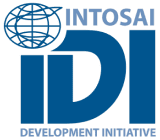
What is the Global SAI
Stocktaking Report?
A collaborative effort to gain insight on SAI Performance
The Global SAI Stocktaking Report (GSR) is a triannual report, which is unique in its perspective on measuring and assessing development and trends in Supreme Audit Institutions (SAIs) across the world. The report also aims to capture SAI status in light of global developments. The results could be used to understand current preconditions for accountability and oversight.
The objective of the GSR is to better understand SAIs performance and capacities, by providing a snapshot of their practices, ranging from institutional set up, through to audit practices to efforts in creating impact through their work.
In addition, the status and activities of INTOSAI regional organisations have been assessed through a separate survey focusing on their role and capacities.
The analysis will result in a special report dedicated to the topic, published as an annexe to the GSR.
The areas of performance measured are compared to previous survey results (GSR2020), to detect and monitor trends in SAI performance over time. In addition, this report aims to assess how global trends are affecting SAI capacities. Results from the key results indicators will be presented in a data annexe, grouped according to INTOSAI regions and World Bank Income level categorisation.
The primary data source for the GSR is the INTOSAI Global Survey 2023. The survey covered responses from 166 SAIs from all INTOSAI regions, who responded to a questionnaire of 170 main questions. The analysis of changes have been done by analysing results against data from the Global Survey 2020 and Global Survey 2017. In addition, results have been analysed against secondary data from the Varieties of Democracy Index (v-dem), World Bank Income Level Categorisation, OECD Fragile State list, Public Expenditure Financial Framework Assessment (PEFA) and Open Budget Index. More details can be found in the Methodology Annex.
The GSR is a collaborative INTOSAI effort. This triannual survey is developed by IDI together with the INTOSAI regions, INTOSAI Goal Chairs, INTOSAI Chair and INTOSAI General Secretariat. IDI remains grateful for these continued collective efforts, and especially for the INTOSAI regions' support in soliciting responses from its members.
Figure 1 - INTOSAI regions and membership

Reading the report
The report presents results for SAI performance and capacities through 5 chapters. The chapter on Institutional Capcities focuses on global context and SAI Institutional capacity. Institutional capacities involves aspects of the institutional and legal framework within which a SAI operates, as well as its’ place in the Accountability Ecosystem. The chapter covers SAI Independence, interference and right to publish reports, SAI resource situation as well as access to resources. Stakeholder relations, an essential aspect of institutional performance, are further presented on SAI Audit Impact. This chapter analyses SAIs’ ability to be responsive to current and emerging issues and engage meaningfully with actors in the Accountability Ecosystems to enhance impact.
The organisational systems capacity of a SAI include the processes and structures within the organisation to enable a more effective and efficient achievement of the desired objectives. These include systems for strategic management, quality governance and support systems, IT infrastructure, human resource management systems and gender and inclusion. These results are presented in SAI Governance page.
The chapter on Professional Capacity, global audit results and overall systems, including auditing standards, quality management and professionalisation are discussed. The SAI professional capacity and SAI staff capacity of a SAI is the ability of the SAI management and staff to function effectively together as per their job requirements. It includes the knowledge and skills of SAI employees. The analysis aims to uncover how SAI capacity and staff capacity act together.
The last chapter SAI role in Fraud and Corruption discusses the work of SAIs in relation to fraud and corruption. Often considered as the ultimate impact of the work of SAIs, the chapter analyses the practices of SAIs as well as aspects of context which may impact their role.


